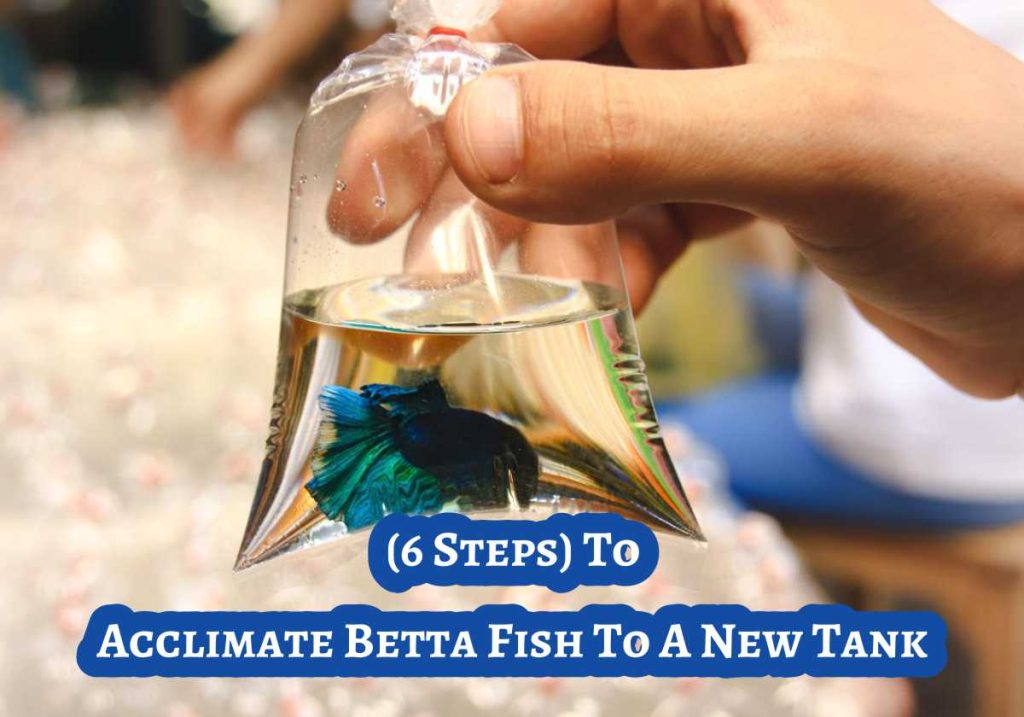As an Affiliate, We may earn a commission that doesn't cost you extra from qualifying purchases using links in this post. It helps keeps this blog running.
If you’ve ever considered adding some natural charm to your fish tank, driftwood might be the missing piece of the puzzle. But before you toss that beautiful piece of driftwood into your aquarium, there’s an important step you need to take: boiling it!
Now, I know what you’re thinking: “Why on earth do I need to boil a piece of wood?” Well, the answer is simple: Boiling driftwood for a fish tank is to ensure it’s safe for your aquarium fish and doesn’t turn your crystal-clear water into a murky mess.
Stay tuned while I walk you through the ins and outs of boiling driftwood for your aquarium, so you can create a stunning fish tank landscape that both you and your fish will love.
So, grab a cup of coffee (or tea, if you prefer), get comfy, and let’s dive in.
Why Boil Driftwood for Aquariums? (4 Top Reasons)
Boiling driftwood for fish tank might seem like an extra step, but trust me, it’s worth it. Here are the top 4 reasons why you should boil your driftwood before placing it in an Aquarium – you should really pay attention to these crucial reasons:
- Eliminating Unwanted Hitchhikers: Driftwood often originates from natural sources like rivers or oceans. Unfortunately, it can come with some unwelcome passengers, such as parasites, insects, or harmful bacteria. Boiling the driftwood effectively kills these hitchhikers, preventing potential harm to your fish.
- Removing Tannins and Sap: Some types of driftwood release tannins into the water, which can discolor it and lower the pH level. Boiling helps leach out these tannins quickly, reducing their impact on your water chemistry. It also eliminates any sticky sap residues that can cloud your tank.
- Reducing Buoyancy Issues: Fresh driftwood can sometimes float in your tank, causing inconvenience. Boiling softens the wood and expels trapped air, making it more likely to sink right away.
- Ensuring Sanitization: Boiling effectively sterilizes the driftwood, guaranteeing that it won’t introduce any harmful pathogens into your fish tank.
How to Boil Driftwood for Aquarium Fish Tank (8 Steps):
In this step-by-step guide, I’ll walk you through the process of boiling driftwood for aquariums and fish tanks.
Step 1: Gather Your Supplies
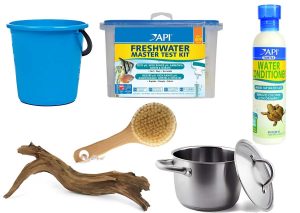
First things first, make sure you have everything you need such as:
– Driftwood (collected or purchased)
– A large pot or container
– Water
– Stove or heat source
– Tongs or gloves
– Scrub brush or sponge
– Aquarium Water conditioner (optional)
Step 2: Choose the Right Driftwood
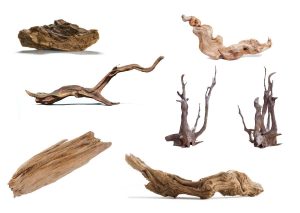
Ensure the driftwood you’ve chosen is suitable for aquarium use. Avoid driftwood that’s been treated with chemicals, painted, or has sharp edges. Go for pieces that have been aged and waterlogged to prevent them from floating in your tank.
Step 3: Scrub It Clean
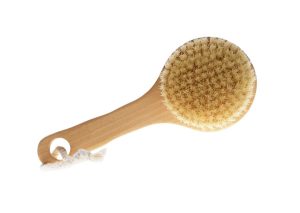
Before boiling, give your driftwood a good scrub with a brush or sponge to remove dirt, debris, and any loose bark. This helps prevent excess dirt from clouding your aquarium water later on.
Step 4: Boil the Driftwood
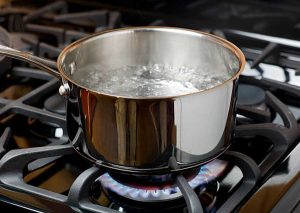
Fill your large pot or container with enough water to completely submerge the driftwood. Place the driftwood in the water and turn on the stove or heat source. Let it come to a boil and then reduce the heat to a simmer.
Step 5: Simmer It
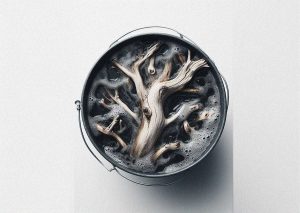
Allow the driftwood to simmer for at least 1-2 hours. Simmering helps to release tannins, which can lower the pH of your aquarium water and make it look tea-colored. If you want to reduce the tannin release, you can change the water once or twice during the boiling process.
Step 6: Cool It Down
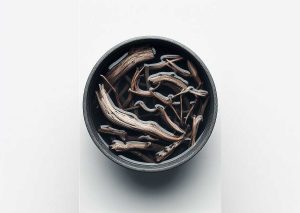
After simmering, turn off the heat and let the water cool naturally. This may take several hours. Never try to cool it quickly with cold water, as the rapid temperature change can damage the driftwood.
Step 7: Test the Driftwood
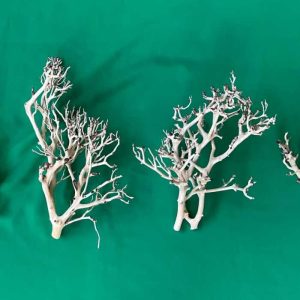
Once the water has cooled, carefully remove the driftwood using tongs or gloves. Inspect it for any signs of residual dirt or contaminants. If needed, give it another gentle scrub.
Step 8: Optional: Soak in Conditioned Water
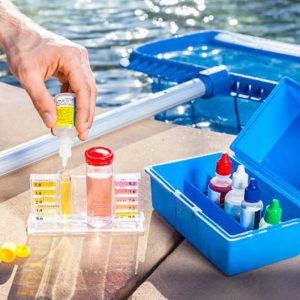
To further reduce tannin release and prepare the driftwood for your aquarium, you can soak it in water treated with an aquarium conditioner for a few days. This step is optional but can be helpful if you have sensitive fish or prefer clear water.
How Long to Boil Driftwood for Fish Tank
To prepare driftwood for your fish tank, boil it for 1 to 2 hours. This ensures the wood is safe for your fish by removing potential impurities. Boiling for that long also helps reduce the release of tannins, which can discolor your tank water. This 1 to 2-hour boiling time is generally effective, but you can adjust it based on the size and type of driftwood and your desired water aesthetics.
The recommended boiling time of 1 to 2 hours serves a specific purpose, and here’s why:
- 1-Hour Boiling: During the first hour of boiling, the process primarily focuses on sterilizing the driftwood and sanitization. This initial phase eliminates potential contaminants, parasites, and pathogens that may reside within the wood. It’s a vital step in creating a healthy environment for your fish.
- 2-Hour Boiling: Extending the boiling time to 2 hours further addresses the issue of tannins. Tannins are natural compounds found in driftwood that can leach into your tank water, giving it a brownish tint. By boiling for the full 2 hours, you allow more of these tannins to be released and washed away. This helps prevent your tank water from becoming discolored.
Beyond these specific time points, longer boiling isn’t necessarily more beneficial. It’s essential to strike a balance because prolonged boiling can weaken the wood’s structure, making it less suitable for your tank decoration.
7 Factors to Consider While Boiling Driftwood For Fish Tank Aquarium
Now that you know how long to boil driftwood, here are the essential factors to consider during the process of boiling driftwood for your aquarium. Let’s dive right in!
- Selecting the Right Driftwood:
The first step in this aquatic adventure is choosing the right driftwood for your aquarium. Make sure to pick pieces that are free from mold, mildew, or any visible signs of decay. It’s essential to select driftwood that won’t release harmful substances into your tank. Look for types like Malaysian driftwood, spider wood, or Mopani wood, which are known to be aquarium-safe options.
- Preparation and Cleaning:
Before you start boiling, it’s crucial to give your driftwood a thorough rinse under running water. You can even scrub it with a soft brush to get rid of any stubborn dirt or algae. This helps remove any loose debris, dirt, or unwanted hitchhikers like algae. Be gentle while cleaning to avoid damaging the wood’s natural textures.
- Soaking Before Boiling:
Before boiling driftwood for an aquarium, soaking your driftwood in a bucket of water for a week or two is a smart move. This helps saturate the wood and encourages it to sink in your aquarium once it’s boiled. It also aids in leaching out tannins, which can turn your water brown.
- Choosing the Right Pot:
Not just any pot will do for boiling driftwood. Opt for a large pot that can comfortably accommodate the size of your driftwood pieces. Ensure it’s clean and hasn’t been used for any toxic substances. You don’t want any unwanted chemicals leaching into your aquarium.
- Boiling Process:
Place the soaked driftwood into the pot and cover it with water. Bring the water to a boil, then let it simmer for about an hour. This process serves two main purposes: it sterilizes the driftwood, killing any potential pathogens, and it further helps remove tannins and other impurities.
- Cooling and Re-Soaking:
After boiling driftwood for aquarium, remove the driftwood and let it cool naturally. Once it’s cooled down, it’s a good idea to soak it again, this time in clean, dechlorinated water. This additional soaking helps ensure the wood is fully saturated and won’t float when placed in your aquarium.
- Monitoring Water Parameters:
As you add the driftwood to your tank, keep a close eye on your water parameters, such as pH and water hardness. Driftwood can lower pH levels over time, so be prepared to make adjustments if necessary to maintain a healthy environment for your aquatic friends.

I’m Akin Bouchard. Even though I now own several different fish species, I first became a koi pond owner because I loved these creatures and wanted to turn my passion into something more serious. I take pride in my collection of koi fish and love sharing my knowledge with others interested in these beautiful creatures.
A Comprehensive Guide to Training Your Fish to Perform Amazing Tricks Feats



